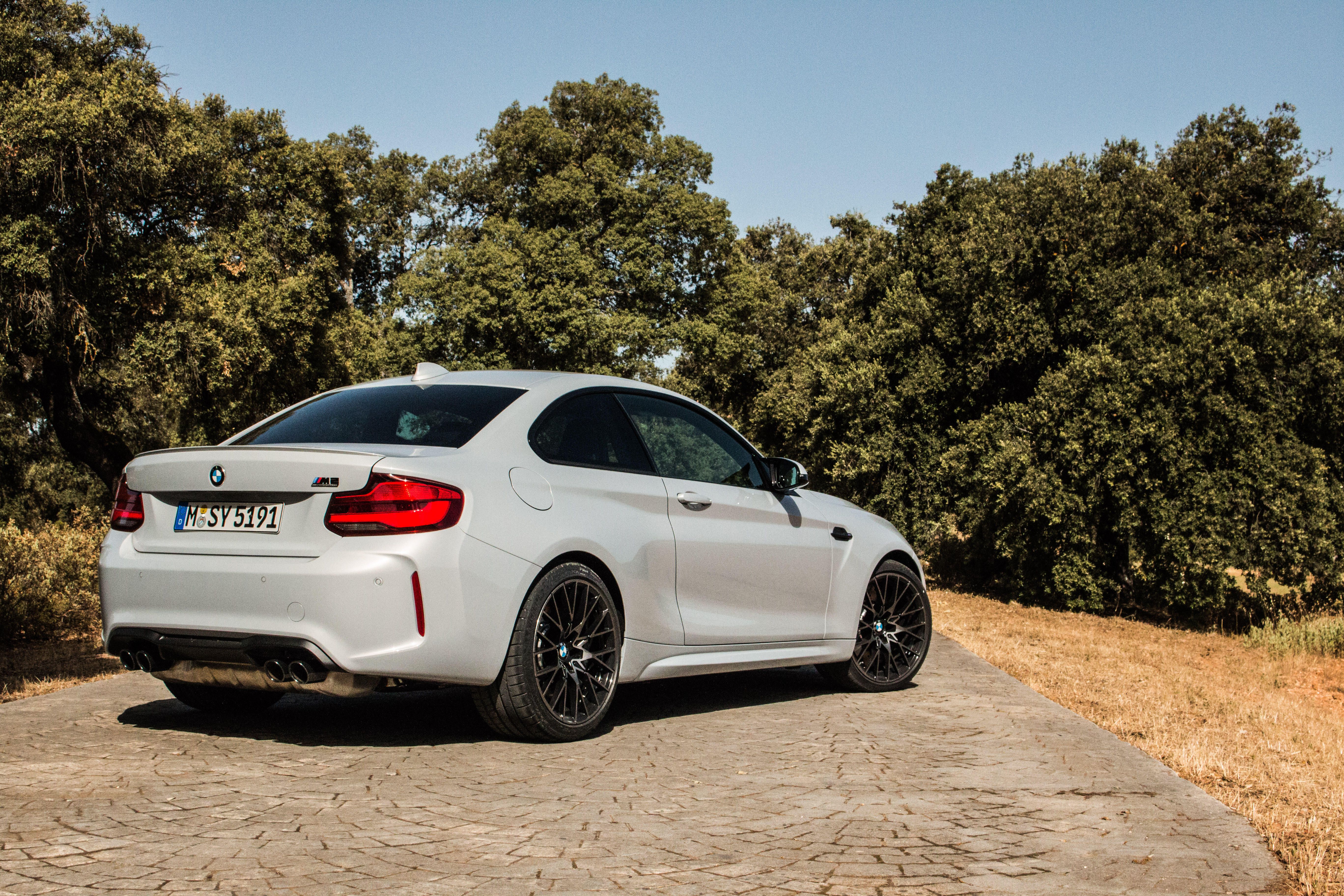
Ask anyone on the Roadshow staff to name a glaring shortcoming to the BMW M2 and they’ll be hard-pressed to come up with one. The coupe’s excellent chassis, punchy 365-horspeower turbo six-cylinder engine and compact dimensions make for a capable and extraordinarily fun car to sling around race tracks and twisty roads alike. It’s come out on top in two of our comparison tests against some stiff competition and has endeared itself to enthusiasts with its pure and simple makeup. And now for 2019, it gets even better with the M2 morphing into the M2 Competition.
Better begins with a fresh 3.0-liter twin-turbocharged inline six-cylinder heart under the hood from the M3/M4, though detuned slightly from 425 horsepower to 405 to not nip too closely to the heels of its bigger siblings. That’s still good for a 40-pony increase over the old single-turbo mill, while torque leaps from 343 pound-feet to a hearty 406. A 6-speed manual transmission remains standard and a 7-speed dual-clutch unit can be equipped for an additional $2,900.
The M2 Competition will sprint to 60 miles per hour in 4.2 seconds with the stick and 4.0 seconds with the dual-clutch. That’s down from 4.3 seconds and 4.1 seconds respectively in the outgoing M2.
To better cool things in high-stress situations, like hot lapping the 3.37-mile Ascari circuit in Ronda, Spain, there are larger front fascia and kidney grille openings to feed more air to the heavier-duty cooling system plucked from the M4 with the Competition Package. The engine’s extra grunt is immediately apparent around the challenging track to rocket the 3,600-pound coupe out of corners and down straights, with peak torque at your disposal between 2,350 to 5,250 rpm.
If for some reason you’re wondering about fuel economy, EPA estimates aren’t available yet, though you can make a rough estimation based off of the bigger M4’s 17 mpg city and 25 mpg highway rating with the manual and 17 mpg city and 24 mpg highway rating with the dual-clutch.
The manual transmission is a joy to row through around Ascari even with its slightly rubbery gear engagement, while auto rev-matching for downshifts letting you focus more on hitting your marks and not embarrassingly throwing it off the track. For the heel-and-toe purists, rev-matching can be disabled. A session in a dual-clutch is also entertaining, with brisk response to manual shift commands and perfectly-timed gear changes in full-auto mode, but the maximum driver-satisfaction title goes to the standard gearbox.
I like more power just as much as the next guy, but the M2’s most endearing trait continues to be its handling character, which has also undergone some tinkering during its Competition transformation. A carbon fiber engine compartment brace borrowed from the M3/M4 adds rigidity to the front, while upgraded ball joints, aluminum control arms and rigid-mounted rear subframe sharpen response. The tuning for the steering and torque-vectoring rear differential has also been revised, and six-piston front and four-piston rear brake calipers now clamp down on larger discs.
The result is brisk turn-in, admirable grip through corners on the 245/35ZR19 front and 265/35ZR19 rear Michelin Pilot Super Sport tires and fade-free brakes for our lead-follow track sessions. Following a ginger warm-up lap are two flying laps with stability control completely on to provide comfortable safety net for rapid and mostly drama-free running.
Once familiar with the track and car, I punch up M Dynamic Mode to loosen stability control’s grip and make things a little more interesting. More wheel spin and slip angle forces me to actually drive and concentrate on smooth steering, throttle and brake inputs to keep the M2 going in the right direction. Things are more challenging with the looser rear end, but a balanced and communicative chassis doesn’t make it impossible to cane the M2 Competition around the track quickly. When you nail a few corners in succession, it’s a tremendously rewarding experience.
For those not concerned about lap times and preferring to go for style points, M Dynamic Mode will let you induce controlled drifts. I don’t purposely try to get things slightly sideways, but do so a couple of times accidentally when getting on the throttle too hard out of a corner as I race to keep up with the lead car being driven by a BMW factory hot shoe. He may have stayed ahead, but I at least got a chuckle out of it each time.
On twisty mountain roads 15 minutes away from the track, the M2 Competition continues to impress with its quick reflexes and fun overall demeanor. Ride compliance isn’t terrible with the passive suspension offering enough give to soften the blow from bumps and the generously bolstered M Sport seats keeping me comfortable and tied down in place.
If you’re waiting to hear about a slew of M2 Competition cabin alterations, prepare to be disappointed. Changes simply encompass the steering wheel from the M3/M4 with Competition Package, BMW M stripes woven into the seatbelts and a red engine start/stop button.
Controlling infotainment is BMW’s responsive iDrive 6 system with an 8.8-inch screen that includes a standard 12-speaker Harman/Kardon audio, navigation and Apple CarPlay capabilities. Disappointingly, BMW still doesn’t support Android Auto. A Wi-Fi hotspot and wireless charging pad are available as options. Standard safety features include forward collision warning with automatic emergency braking, lane departure warning and a rearview camera.
When it arrives in dealers in September, the 2019 BMW M2 Competition will begin at $59,895 including destination, which is a nice bump over the 2018 BMW M2’s $55,495 starting price tag. You could look at the Competition’s steeper cost of entry as a strike against it, but then again, it is substantially more capable than its predecessor and still quite a bit more affordable than the $70,145 M4 coupe.
It looks like I still got nothing when it comes to finding major flaws with the M2.

